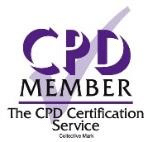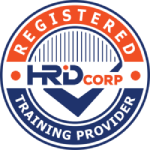About this Virtual Instructor Led Training (VILT)
There are various kinds of geophysical data available. They are separated into seismic and non-seismic (multi-physics) data. Non-seismic or multi-physics data (which includes gravity, magnetics, electrical, electromagnetics, spectral etc – apart from providing complimentary information to seismic) is the main source of information for very shallow subsurface applications such as engineering, mapping pollution, archaeology, geothermal energy, and related areas. This 5 half-day blended Virtual Instructor Led Training (VILT) course will focus specifically on seismic data which is the main method used in the Oil & Gas industry.
In this blended VILT course, participants will be equipped to understand that seismic data represents the movement of the surface, resulting from waves generated by a source, dynamite or vibrator which are reflected by changes in the subsurface rocks. The basic principles of acquisition and processing will be explained and insights into advanced methods, allowing a much more accurate interpretation of seismic data than previously considered possible, will also be provided.
This blended VILT course contains an introduction to Machine Learning and its important role in all aspects of seismic acquisition, processing, and interpretation. There is no need to know in detail how the algorithms work internally but it is necessary to know how to use them correctly to achieve optimum results.
By attending this VILT course, participants will be able to acquire the following:
- Obtain an understanding of the strengths and limitations of geophysical methods, specifically seismic, and the costs and risks involved, and how to reduce these.
- Be able to communicate more effectively with staff in other disciplines.
- Understand the potential applications of seismic data and know how to formulate the requirements needed for prospect and field evaluation.
- Gain an awareness of modern seismic technology.
- Apply the learning in a series of practical, illustrative exercises.
- Know what types of questions to ask to assess the necessary quality of a seismic project in its role in a sequence of E&P activities.
The blended VILT course is intended for non-geophysicists who have intensive interaction with geophysicists. But it may be of interest to those who want to know about the recent progress made in geophysics, leading to amazing imaging results, which could not be imagined a decade ago.
The blended VILT course will bring to the attention of the geologists, petrophysicists and reservoir/petroleum engineers an awareness of how the data they will work with is acquired and processed by the geophysicist. It will introduce the concepts that are of importance in geophysics and thus relevant for non-geophysicists to know and be able to communicate with geophysicists as well as formulate their requests.
This blended VILT will be delivered online in 5 half-day sessions. Each half-day consists of a 4-hour interactive (VILT) session, with presentations/videos and a self-paced study component that involves exercises based on the topics presented. In addition, there is a multiple-choice quiz related to the presentations and exercises.
The presentations are at an intermediate level but clear explanations and interaction will provide participants with a full understanding of its relevance for non-geophysicists.
Throughout the 5 half-days, your expert course leader will be available to correspond with participants either through email or the Moodle Discussion Forum to answer questions from participants and to clarify any doubts.
Your expert course leader has degree in Geology (University of Leiden), a Master’s degree in Theoretical Geophysics (University of Utrecht) and a PhD in Utrecht on “Full wave theory and the structure of the lower mantle”. This involved forward modelling of P- and S-waves diffracted around the core-mantle boundary and comparison of the frequency-dependent attenuation of the signal with those obtained from major earthquakes observed at long offsets in the “shadow zone” of the core. These observations were then translated into rock properties of the D” transition zone.
After his PhD, he joined Shell Research in The Netherlands to develop methods to predict lithology and pore-fluid based on seismic, petrophysical and geological data. He subsequently worked for Shell in London to interpret seismic data from the Central North Sea Graben. As part of the Quantitative Interpretation assignment, he was also actively involved in managing, processing and interpreting Offshore Seismic Profiling experiments.
After his return to The Netherlands, he headed a team for the development of 3D interpretation methods using multi-attribute statistical and pattern recognition analysis on workstations. After a period of Quality Assurance of “Contractor” software for seismic processing, he became responsible for Geophysics in the Shell Learning Centre. During that period, he was also a part-time professor in Applied Geophysics at the University of Utrecht.
From 2001 to 2005, he worked on the development of Potential Field Methods (Gravity, Magnetics) for detecting oil and gas. Finally, he became a champion on the use of EM methods and became involved in designing acquisition, processing and interpretation methods for Marine Controlled Source EM (CSEM) methods.
After his retirement from Shell, he founded his own company, specialising in courses on acquisition, processing and interpretation of geophysical data (seismic, gravity, magnetic and electromagnetic data), providing courses to International and National energy companies.
In the last couple of years, he became keenly interested in the use of Machine Learning in Geophysics. Apart from incorporating “Artificial Intelligence” in his courses, he also developed a dedicated Machine Learning course for geophysics.
To further optimise your learning experience from our courses, we also offer individualized “One to One” coaching support for 2 hours post training. We can help improve your competence in your chosen area of interest, based on your learning needs and available hours. This is a great opportunity to improve your capability and confidence in a particular area of expertise. It will be delivered over a secure video conference call by one of our senior trainers. They will work with you to create a tailor-made coaching program that will help you achieve your goals faster.
Request for further information about post training coaching support and fees applicable for this.




